Agapanthus praecox (Common agapanthus)
Life
> eukaryotes >
Archaeoplastida >
Chloroplastida
>
Charophyta > Streptophytina > Plantae (land plants)
> Tracheophyta (vascular plants) > Euphyllophyta > Lignophyta (woody plants)
> Spermatophyta (seed plants) > Angiospermae (flowering
plants)
> Monocotyledons > Order: Asparagales
> Family: Amaryllidaceae > Genus: Agapanthus
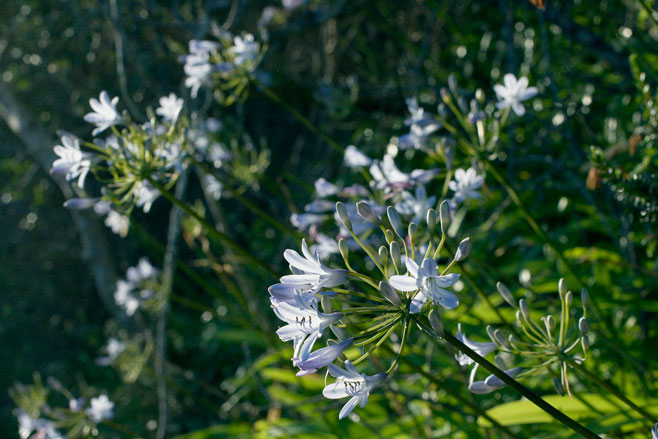 |
|
Agapanthus praecox ssp. minimus on
the rocks at Storms River Mouth, Eastern Cape South Africa. [photo
Colin Paterson-Jones ©] |
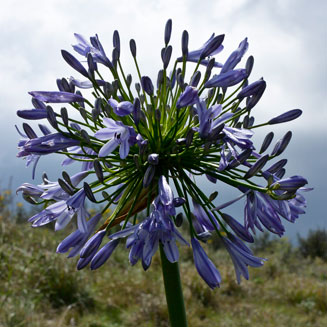 |
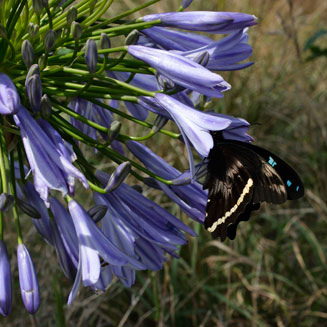 |
|
Agapanthus praecox flowering in summer in
grassland on Bosberg above Somerset East, Eastern Cape, South Africa.
[photo
Colin Paterson-Jones ©] |
A Green-banded Swallowtail (Papilio nireus)
butterfly visiting a flower of Agapanthus praecox in summer in
grassland on Bosberg above Somerset East, Eastern Cape, South Africa.
[photo
Colin Paterson-Jones ©] |
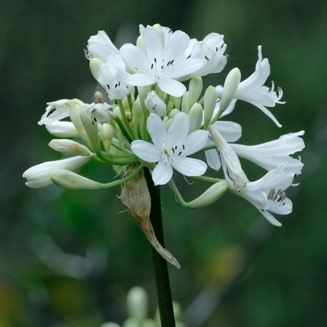 |
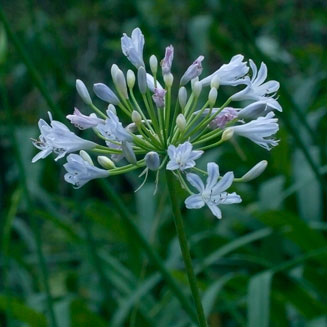 |
|
The albino form of Agapanthus praecox ssp.
minimus on the rocks at Storms River Mouth, Eastern Cape South
Africa. [photo
Colin Paterson-Jones ©] |
Agapanthus praecox ssp. minimus on
the rocks at Storms River Mouth, Eastern Cape South Africa. [photo
Colin Paterson-Jones ©] |
Distribution and habitat
Natural distribution extends from Knysna in the
Western Cape, through the Eastern Cape to southern KwaZulu-Natal.
Occurs in grasslands on rocky hillsides (Pooley 1998). This is the
species most commonly cultivated in gardens worldwide.
Life cycle
- Flowers from December to February (Pooley 1998).
- The photography above shows that flowers can be visited by
butterflies but they are probably also visited by large bees
(e.g. Xylocopa) (Manning et al. 2002).
- The fruit of Agapanthus is a three-angled capsule
containing flat, black winged seeds. Seed dispersal is
presumably mainly by wind?
- Leaves are evergreen (Leighton 1965), which seems to be a
characteristic of Agapanthus species that grow in regions
with relatively moist winters.
Chemistry
See under
Agapanthus.
Uses
As for Chemistry, see under
Agapanthus.
Publications
-
Leighton F.M. 1965. The genus Agapanthus
L'Hérit. Journal of South African Botany Suppl. 4: 1-50.
-
Manning J., Goldblatt P. and Snijman D. 2002. The Color
Encyclopedia of Cape Bulbs. Timber Press, Portland.
- Pooley, E. 1998. A Field Guide to
Wild Flowers KwaZulu-Natal and the Eastern Region. Natal Flora
Publications Trust, Durban.
Text by Hamish Robertson |
